Preventing and Properly Treating Hair Loss
Hair loss is an unwelcome development. What can be done?
Brushing your hair and finding more hair is left in the bristles than you’d like is not always a cause for concern. Every person has about one million hair follicles on their head. The amount, color and density is determined by each person’s DNA. Hair has its own cycle – just like the body’s cells, they constantly renew themselves. Full, healthy hair is often the beauty standard, and most people are reluctant to see hair anywhere else than on their head. And of course, we worry when too many fall out.
Hair loss is characterized as losing more than 100 hairs per day. Washing can even lead to losing over 300 hairs!
In this case, it is advisable to see a doctor or specialist who can make a diagnosis based on your medical history or a clinical exam. It is especially important to find and counteract the reasons for hair loss. Baldness (alopecia) comes into question when at least 60% of the hair on the head has been lost. But even then – the battle is fr from lost since, genetically, hair is programmed to grow for a lifetime.
It is precisely this scientific knowledge that Moser Medical uses in the most effective solution against hair loss: a hair transplantation procedure that actually forms new hair.

Possible causes of hair loss
There are many reasons for hair loss. Oftentimes, it is a symptom of a disease. In this case, you are in the best hands with your specialist or dermatologist. Your doctor will investigate possible causes with you. However, hair loss can also be hereditary.
One such phenomenon is a receding hairline above the temples: this is often seen in young men between 20-30 years of age. This form of hair loss is typically hereditary. Hair transplants with Moser Medical can give you a fuller head of hair – for the rest of your life!
Diseases and issues that may lead to hair loss:
- Hormone disorders, menopause, pregnancy, birth control pills
- Thyroid disease
- Medications
- Metabolic disorders
- Psychological disorders such as depression, stress, grief or trauma
How does hair grow?
Stages of hair growth
A person’s DNA is responsible for how our hair is in genetic terms – the amount of hair, its color, thickness, diameter and the length. The hair grows according to an inherited cycle. Each day, a hair grows between 0.3 and 0.5 mm. In one year, that comes to about 15 cm. Hair doesn’t grow synchronously, but rather in different phases: approximately 90% of the hair on the head is in a growth phase (anagen phase) for two to six years. In a roughly two-week transition phase (catagen phase), the root becomes calloused as it is no longer supplied with nutrients. It shrinks and prepares for its last phase.
The hair follicle then moves into the resting or hair loss phase (telogen phase), during which all metabolic activities in the hair stop. The old hairs are then replaced with new ones.
The regrowing hair pushes the old hair out of the follicle, and it finally falls out. This can happen up to 30 times per hair follicle. The hair cycle then returns to the growth phase and the whole process repeats. By the way, people naturally lose around 60 to 100 hairs a day.
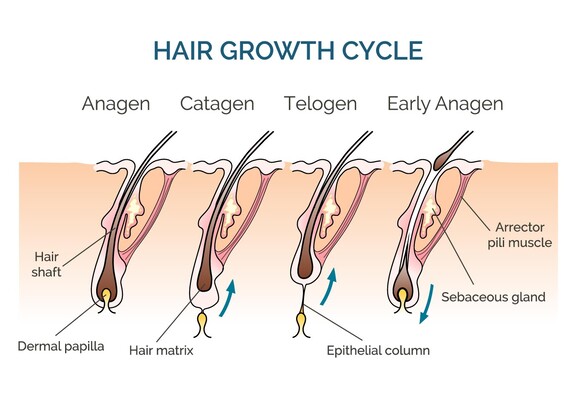
Types of hair loss
Pattern hair loss
Pattern hair loss (alopecia androgenetica) is the most common type of hair loss. Hair follicles react more sensitively to the hormone androgen and fall out. This reaction is genetic. Treatments with a patient’s own blood treatment is an effective therapy for hair loss as it can stimulate hair growth and slow down hair loss.
Spot baldness
Spot baldness (alopecia areata) is an autoimmune disorder in which the scalp becomes inflamed. What triggers lymphocytes to attach the hair follicles is still unclear. Children and young adults are often affected by spot baldness.
Diffuse hair loss
Diffuse hair loss (alopecia diffusa) more often affects women than men. It can be caused by many things, from hormonal fluctuations to stress or deficiency syndromes. One possible treatment is micropigmentation (STP) to cover thin or balding areas.
Scarring hair loss
Inflammation in the scalp can result in irreversible hair loss with scarring (alopecia cicatricalis). This can be caused by physical damage, deep infections or autoimmune diseases.
Diagnosing hair loss
When assessing a patient’s medical history, a dermatologist can determine an individual’s particular situation. The patient reports on the course of their hair loss, and whether they experience an itchy scalp or dandruff. Medications, the use of hair care products and diseases are also discussed. Hormone supplements and preparations play a very important role in women during their menstrual cycle; but hormonal influences play a role in men’s hair loss, too.
After going through a patient’s medical history, a clinical exam including hair analysis and blood work is performed. The condition of the hair and various blood values are checked. An analysis of the hair follicle – also known as a trichogram – can determine pathological changes in the hair. If a scarring hair loss is suspected, a punch biopsy is also performed. This involves taking a tissue sample from the scalp under general anesthesia.
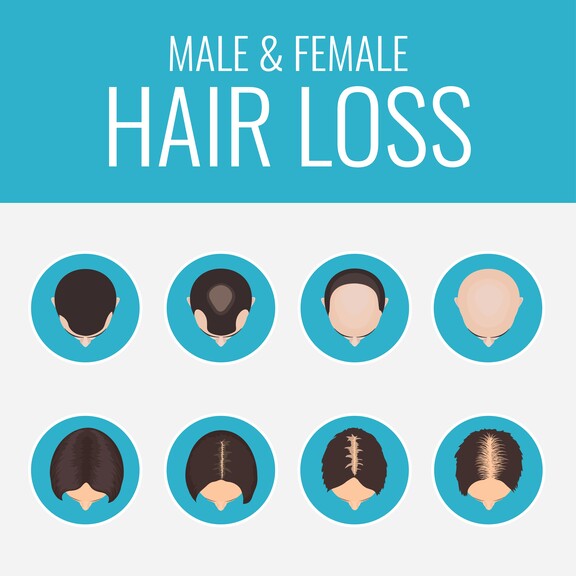
Hair loss in women
There are many causes of hair loss in women. Pregnancy and childbirth can affect hair, as can taking birth control pills or menstruation. High stress levels, as well as some medication or deficiencies, especially iron deficiency, can affect the scalp and hair.
Thinning hair is often found in the area around a women’s natural parting. Balding occurs only in the rarest of cases and can even affect women in their youth.
One special challenge is menopause. During this phase of life, hair may get finer and finer and lead to androgenetic baldness. Around 50% of women are affected by this. The cause is still unclear, but it is believed to be the effect of more sensitive hair roots. Menopause is one of the most common causes of hair loss in women. A doctor or specialist can help women through the effects of their menopause.
Long-term hair loss treatment options
Follicular unit extraction (FUE)
Follicular unit extraction is a method of harvesting donor hair from the donor site. The individual hair follicles are gently extracted. Cutting-edge technology spares valuable skin tissue, gently removing the hair follicle from the scalp. This procedure takes a few hours. The conventional FUE method requires patients to shave the back of their head. Thanks to the latest technology, Moser Medical also ernables highest growth rates with the FUE method.
Our long hair FUE procedure does not require shaving. The extracted hair is a bit longer compared to that harvested with the FUE method.
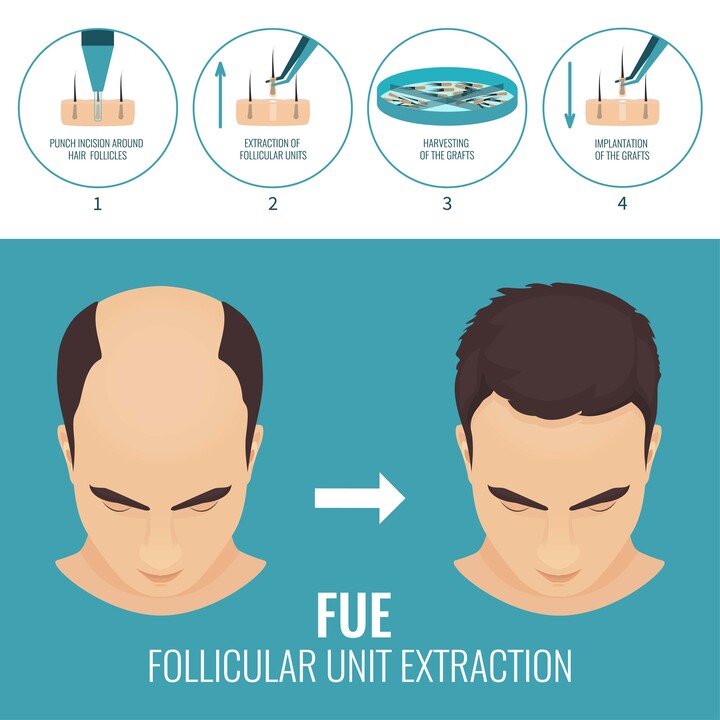
Strip extraction (FUT)
Follicular unit transplantation involves harvesting donor hair by removing a long strip of hair from the donor site on the back of the head.
Moser Medical hair transplants using this method take a few hours and are a reliable way to achieve naturally thick hair again, especially in the case of hereditary or pattern hair loss – for a lifetime!
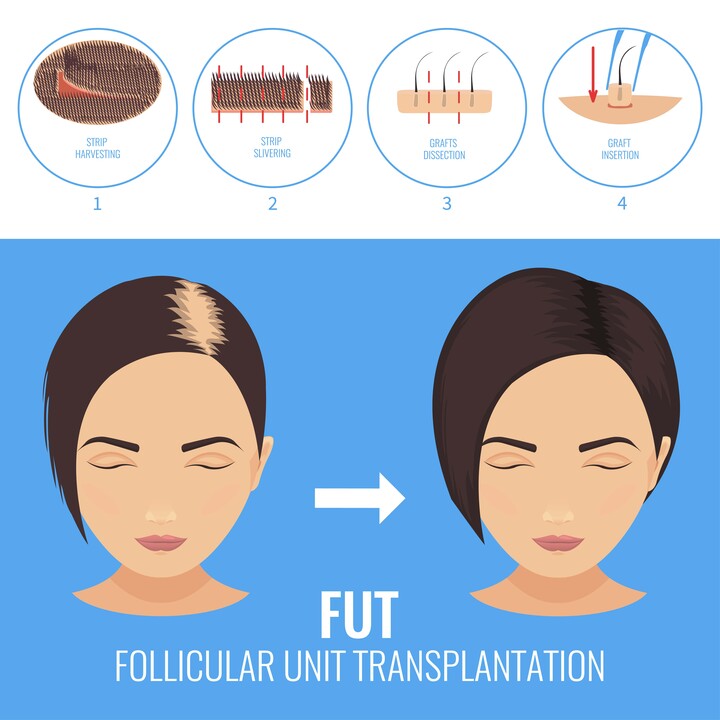
Hair loss therapy with plasma (PRP)
Therapy with platelet rich plasma targets areas of the head at risk of hair loss. A patient’s own blood plasma (platelet rich plasma) is injected into the area affected. The platelets and growth hormones naturally found in blood can reactivate the hair root cells, and thus strengthen existing hair.
This method can help prevent or delay hereditary hair loss!
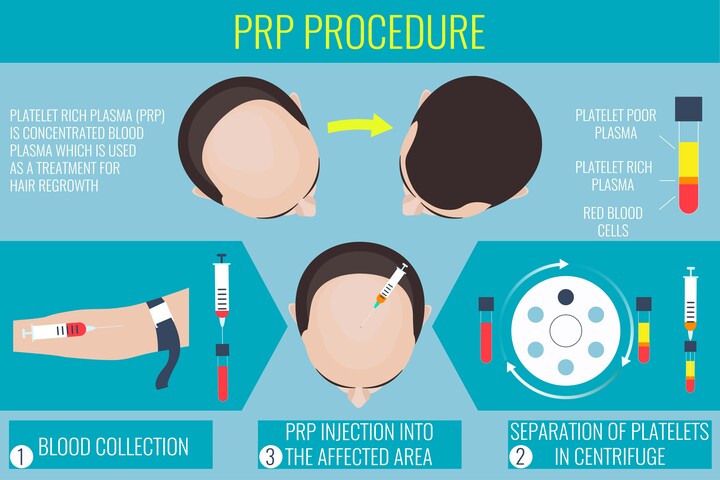
Cosmetic alopecia treatment
Scalp trichopigmentation is a medical procedure to pigment the skin. This procedure conceals bald and thinning spots on the scalp. After two or three sessions, the individual markings merge to form the appearance of natural hair.
Hair appears denser with the STP method. It is suitable for both women and men. The effect lasts up to 24 months, at which time Moser Medical recommends repeating the procedure for a fresh look.
The more you know: the structure of a hair follicle
So, how is hair structured? A multitude of small fibers protect our head and scalp from the elements. Our natural headgear is hair made of keratin. Hair features three layers: cuticle, cortex and medulla. These three technical terms stand for the protective layer, the layer that forms the main bulk and pigment of the hair, and the medullary canal, which is only visible with particularly thick hair.
The hair root is located in the lower area of the dermis. The hair shaft is in the hair follicle, an elongated indentation of the epidermis from which the hair grows. The number of hairs on the scalp varies between 80,000 and 150,000 hairs with a density of 180 to 300 hairs per square centimeter.
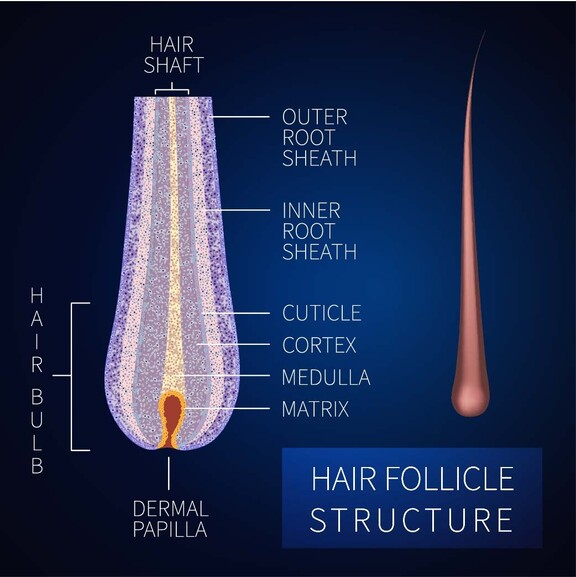
The solution for hereditary pattern hair loss
Long story short: hereditary hair loss requires experts and special medical treatment. A hair transplant is the only effective solution for hereditary hair loss!
Comprehensive medical consultation and personalized care, paired with Moser Medical’s tried-and-tested yet gentle methods guarantee a life with fuller hair!

Moser Medical at a glance
- Experience of more than 35,000 procedures in more than 45 years
- Strip and follicle unit extraction methods
(FUT, FUE, and long hair FUE) - State-licensed clinic
- Team of 17 medical experts
- ”Storage Solution“ nutrient solution developed by Moser Medical
- Moser Medical "BioRegeneration"
- Continuous professional development
- Internationally recognized
- Our own research lab
- The highest hygiene standards
- Intensive pre & post-care